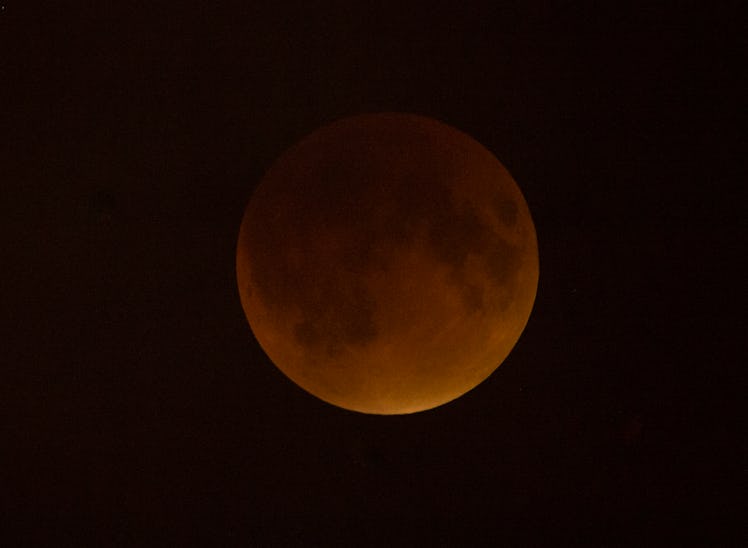
You Only Have A Short Time To See The Next Lunar Eclipse, So Look Up
Astrology lovers and stargazers, rejoice! At the end of the month, we'll get to see an amazing lunar phenomenon in the sky. On Jan. 31, the lunar eclipse will take place, and this year it's a special Super Blue Blood Moon. Although this event isn't getting quite as much buzz as the solar eclipse of 2017, trust me, it's pretty cool. Whenever something like this happens, there are always the preliminary questions: how can I see the lunar eclipse? Where is it happening? How long does the lunar eclipse last? Allow me (OK, and science), to explain.
According to NASA, the total length of the lunar eclipse is about five hours; it will begin at around 2:51 a.m. PT and last until around 8:08 a.m. PT. However, that includes the pre-eclipse and post-eclipse phases. The main portion of the action, known as totality, will last just over an hour, from 4:51 a.m. PT to 6:07 a.m. PT. This is when you can hope to see the super blue blood moon in all of its glory. Early bird gets the worm — or in this case, the sweet moon pic for Insta.
This is great news for West Coasters — or at least, West Coasters who are willing to get up that early. East Coasters have a little more difficulty viewing the Super Blue Blood Moon, as it will begin at 5:51 a.m. ET, as the sky is beginning to lighten up. Gordon Johnston, the program executive and lunar blogger at NASA Headquarters in Washington, says that the best time for East Coasters to take a look is 6:45 a.m. ET. Be sure to follow hashtags on Twitter and Instagram if you want to see photos from other locations.
Let's back track for a second. Super Blue Blood Moon? To be honest, this kind of sounds like an expensive smoothie flavor or Lush bath product. Although it is neither of these things, it is definitely magical. According to Space.com, on Jan. 31, the second full moon of January will occur (although some places will not see it until Feb. 1), and it will become fully eclipsed by the Earth's shadow. The second full moon in a single calendar month is called a Blue Moon, hence the "blue" part of "Super Blue Blood Moon." This phenomenon happens once every 2.7 years — not exactly as rare as the phrase "once in a blue moon" would have you think.
The "super" part has to do with the moon's position. Supermoons occur when the moon's perigee — its closest approach to Earth in a single orbit — coincides with a full moon. The moon's perigee, as well as its apogee (its farthest approach from the Earth) fluctuates every month due to tidal and gravitational pulls. This means that there are only a few supermoons each year, at most, because the moon's orbit changes orientation, while the Earth always orbits the sun. In a supermoon, the moon appears brighter and closer to Earth than normal, although Space.com points out that this can be difficult to see with the naked eye. Might be a good time to pull out that old telescope, eh?
OK, we've almost got everything covered, except the blood part. "Blood Moon" is not a scientific term, but it is well known. It's actually a colloquialism for a total lunar eclipse. When the sun fully eclipses the moon, the two often take on a reddish color, hence "blood" moon.
So, quick recap: A supermoon is when the moon is at its closest position relative to Earth, within a single orbit. A blue moon is the second full moon in a single calendar month. "Blood moon" is another term for a lunar eclipse, because the moon takes on a blood-red color. Super. Blue. Blood. Moon. OK, I think I've got it.
Now that you've got all of the information, I definitely encourage you to check out the Super Blue Blood Moon. The last time it occurred was 150 years ago, so we won't see one again in our lifetime.
Check out the entire Gen Why series and other videos on Facebook and the Bustle app across Apple TV, Roku, and Amazon Fire TV.